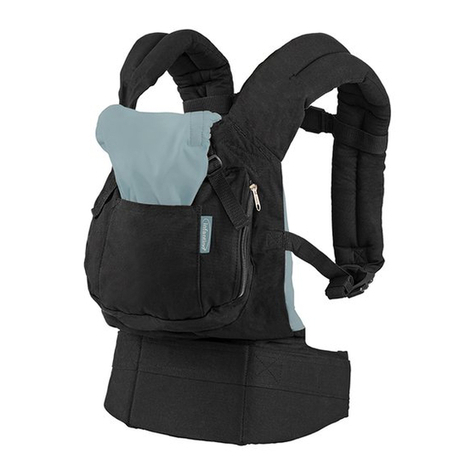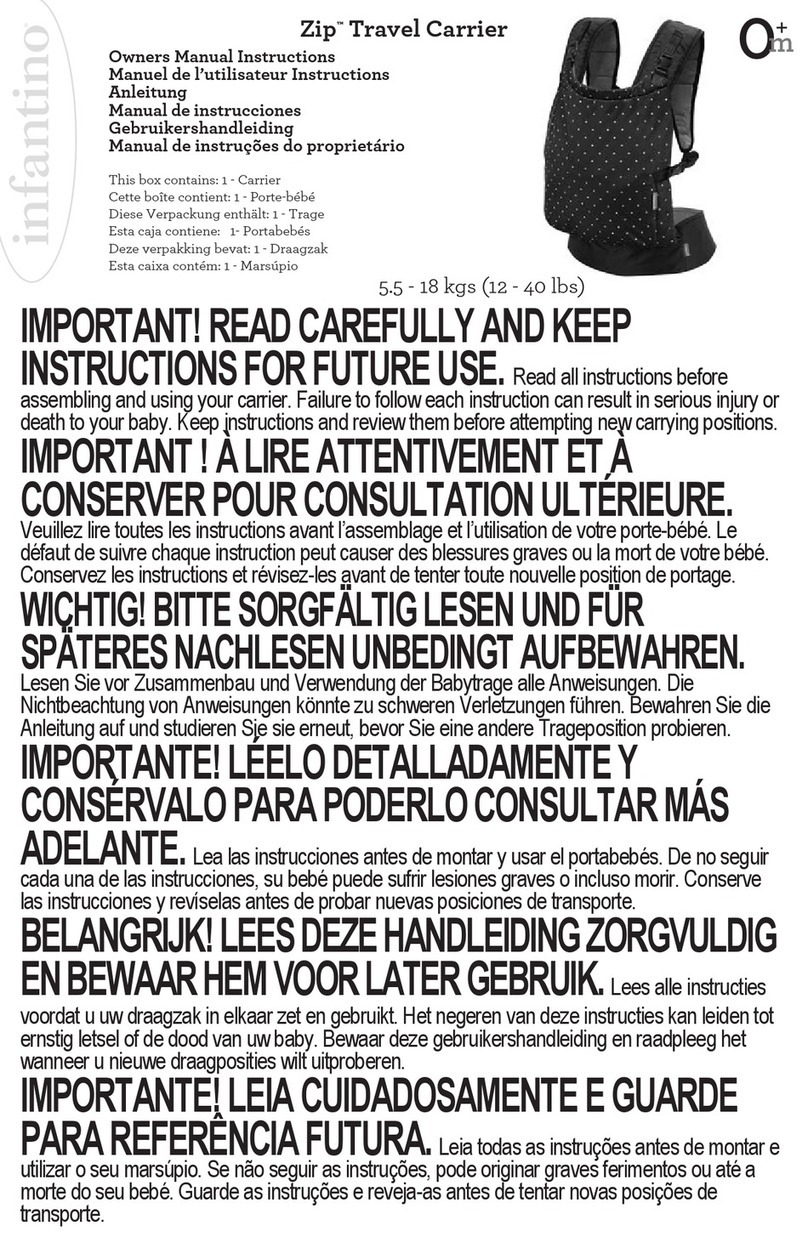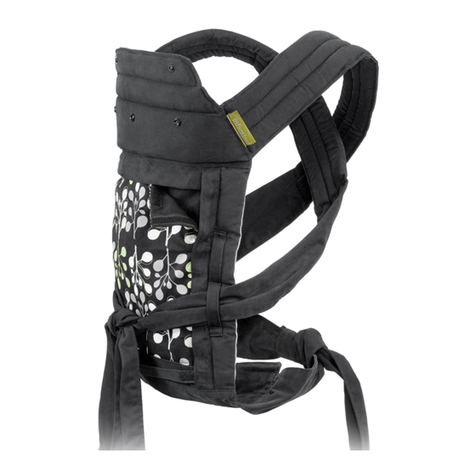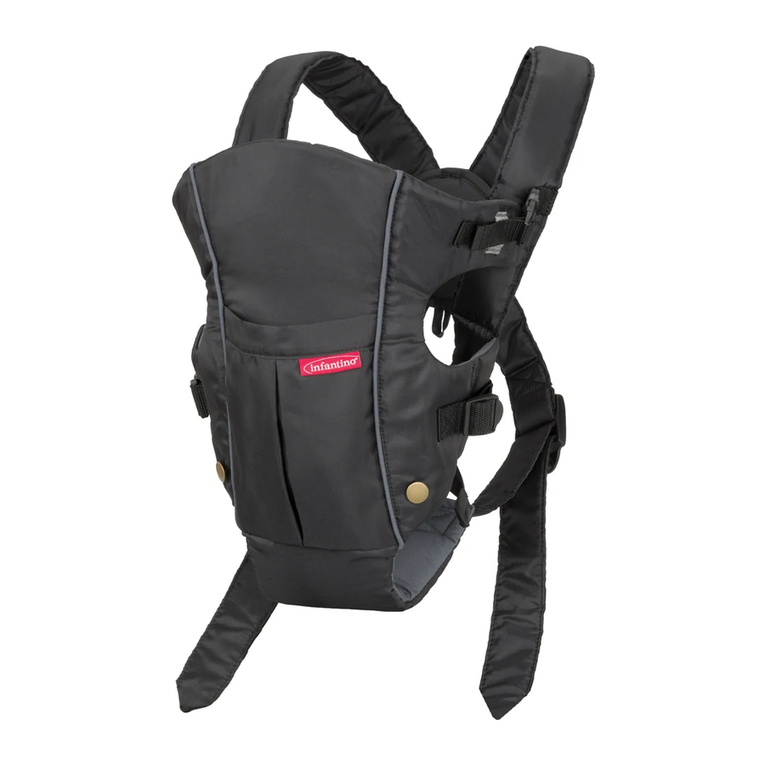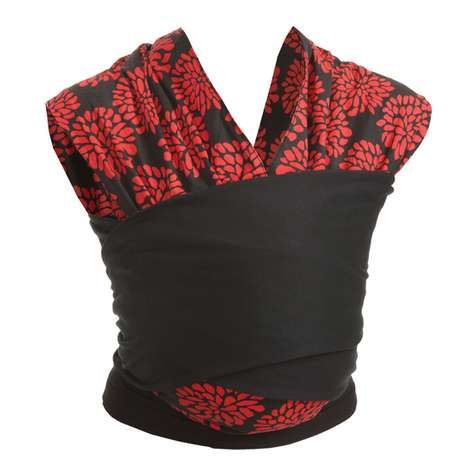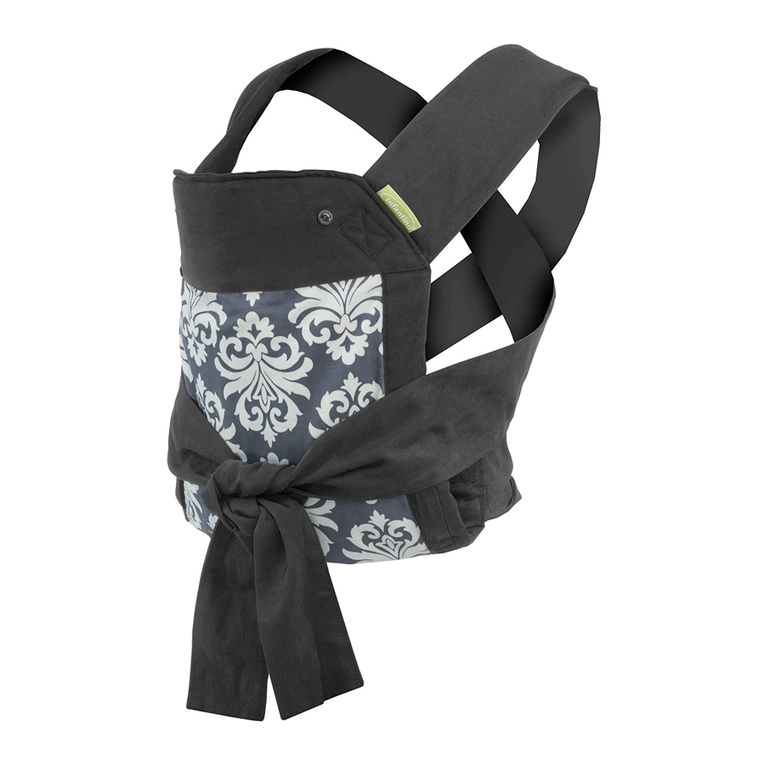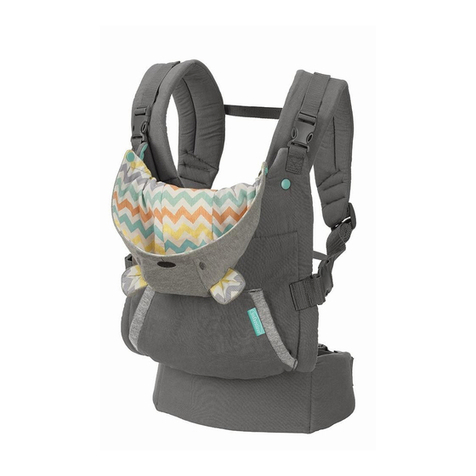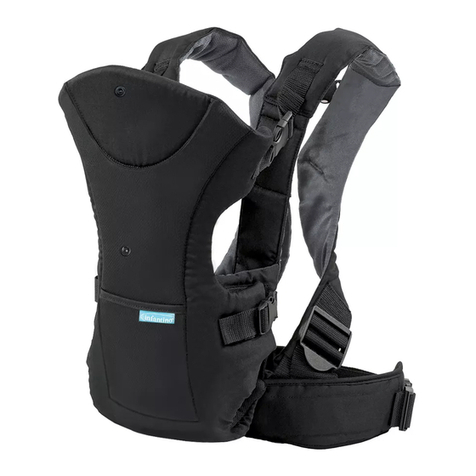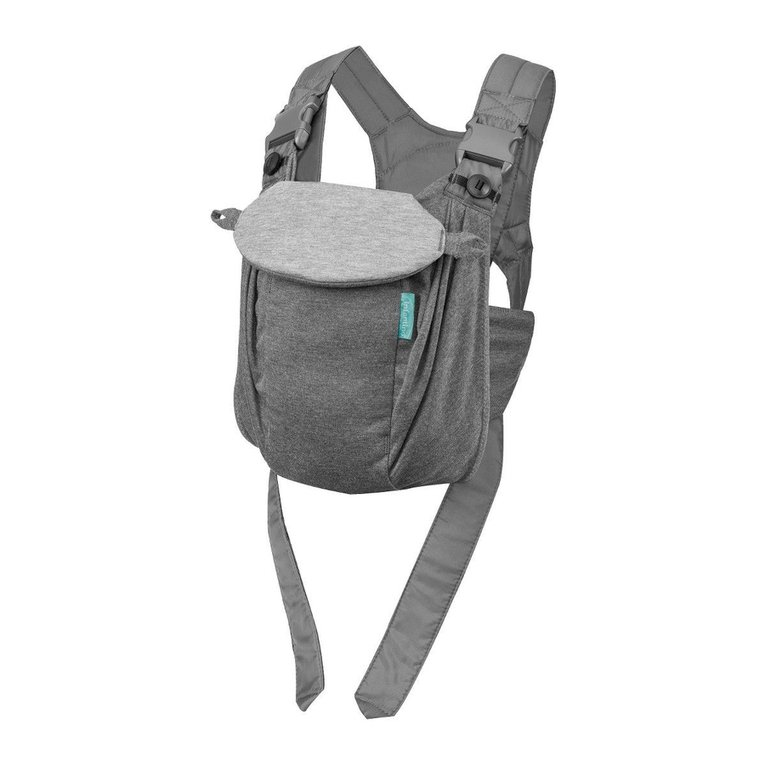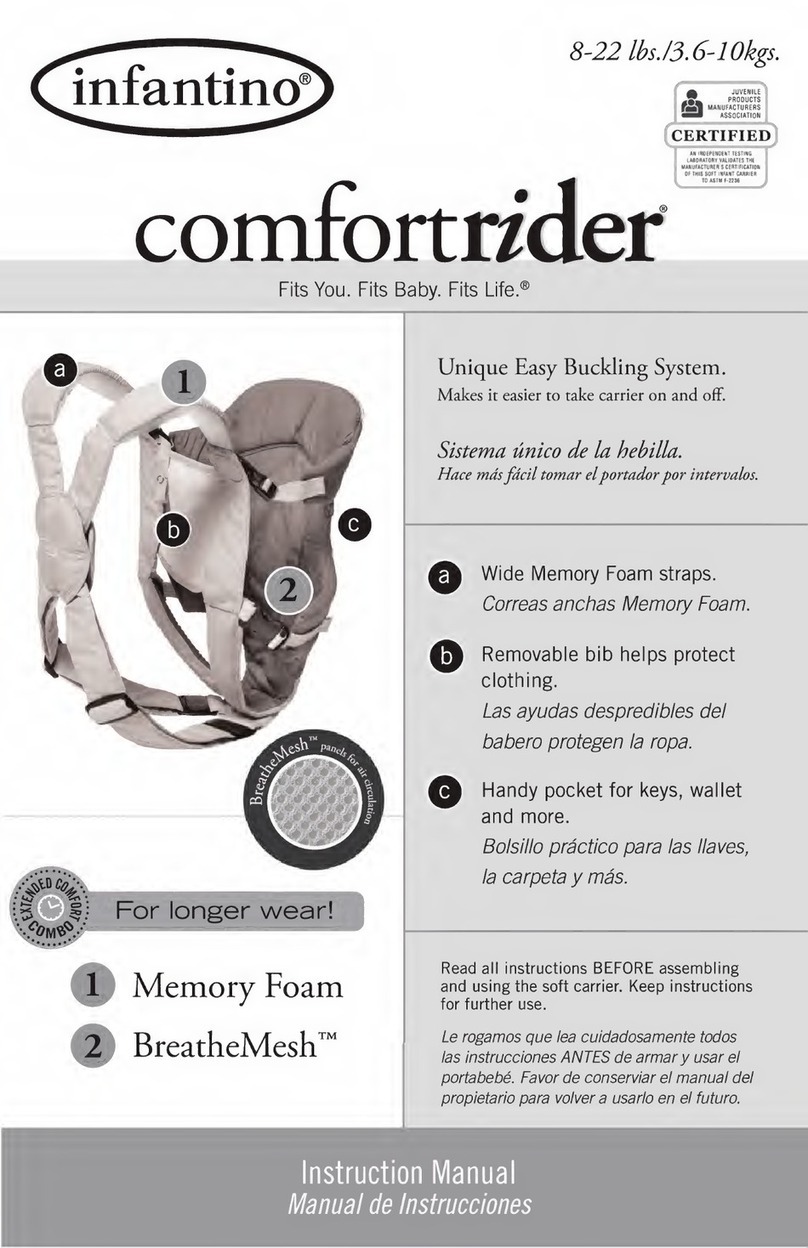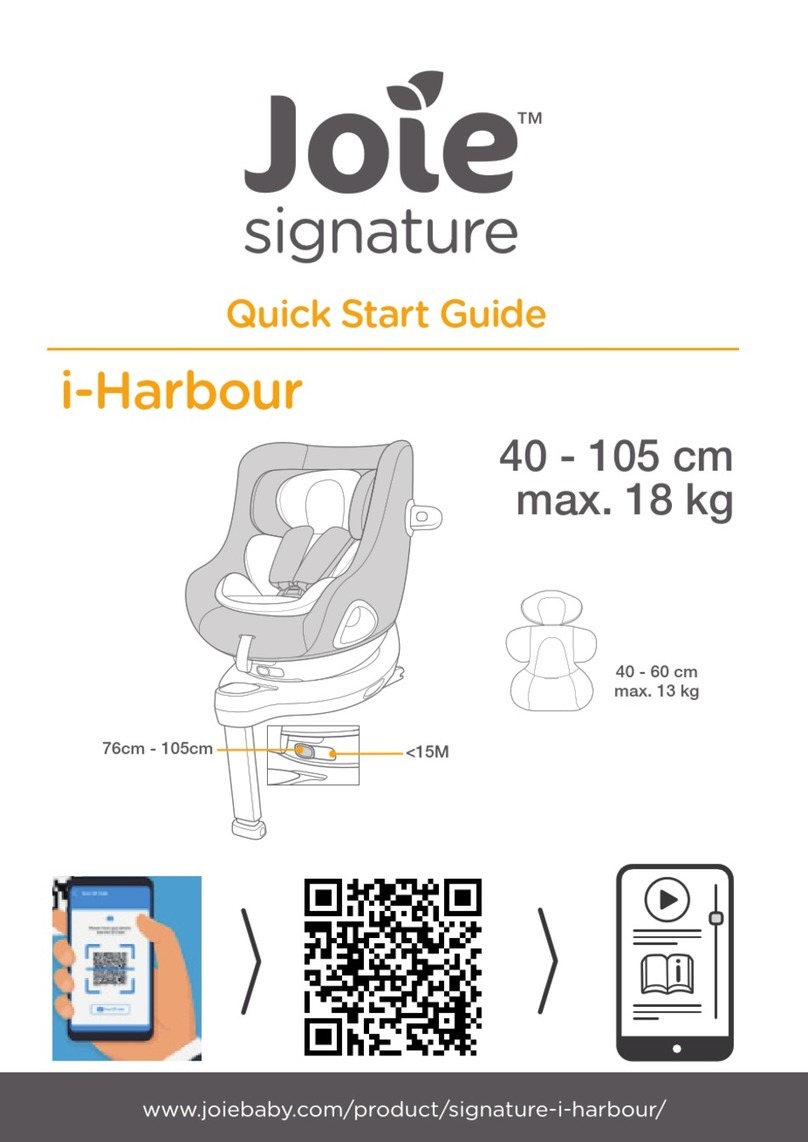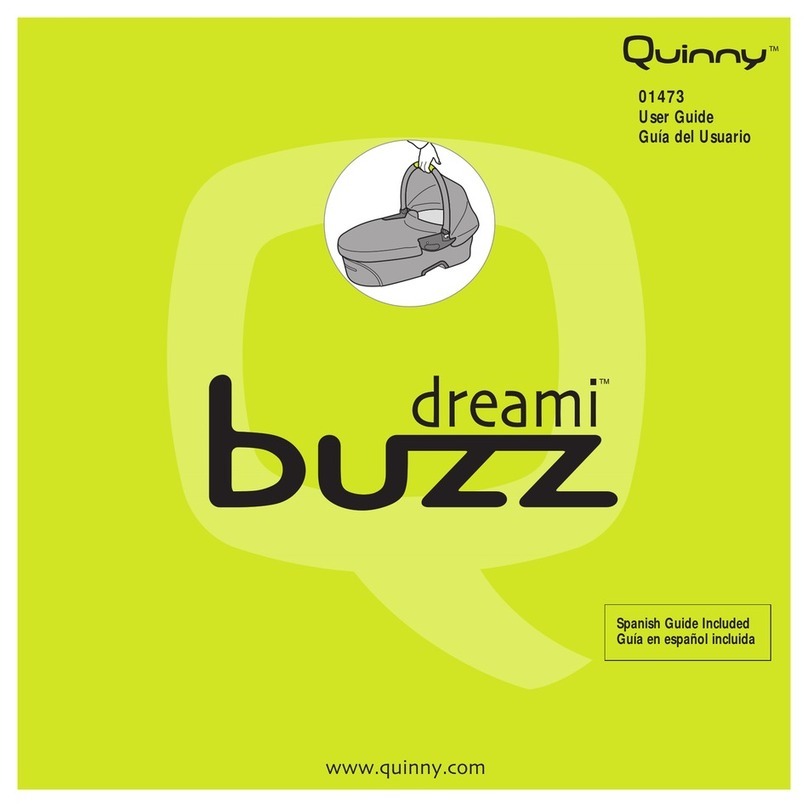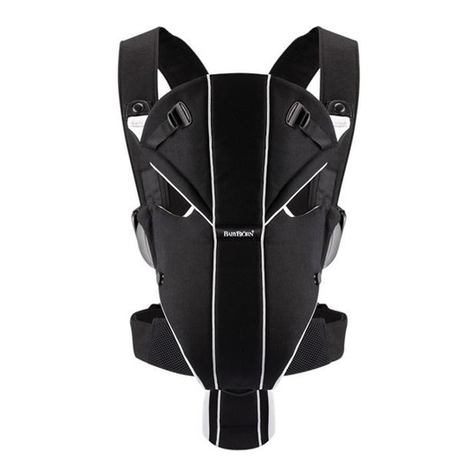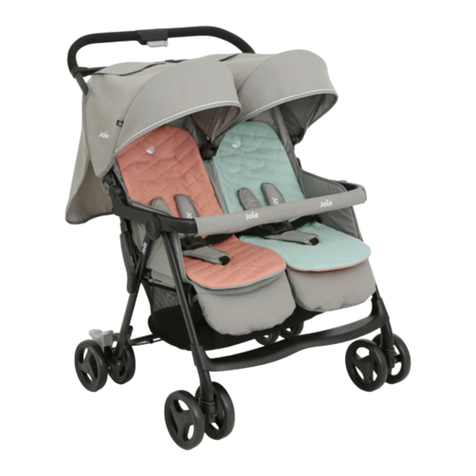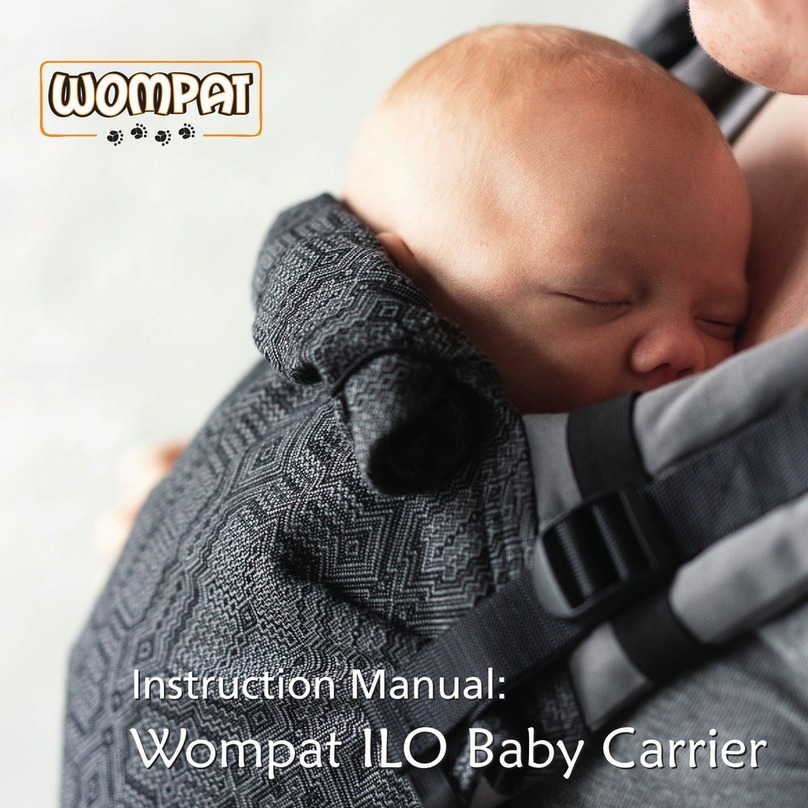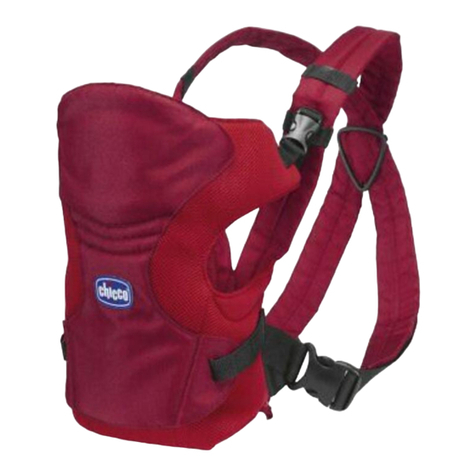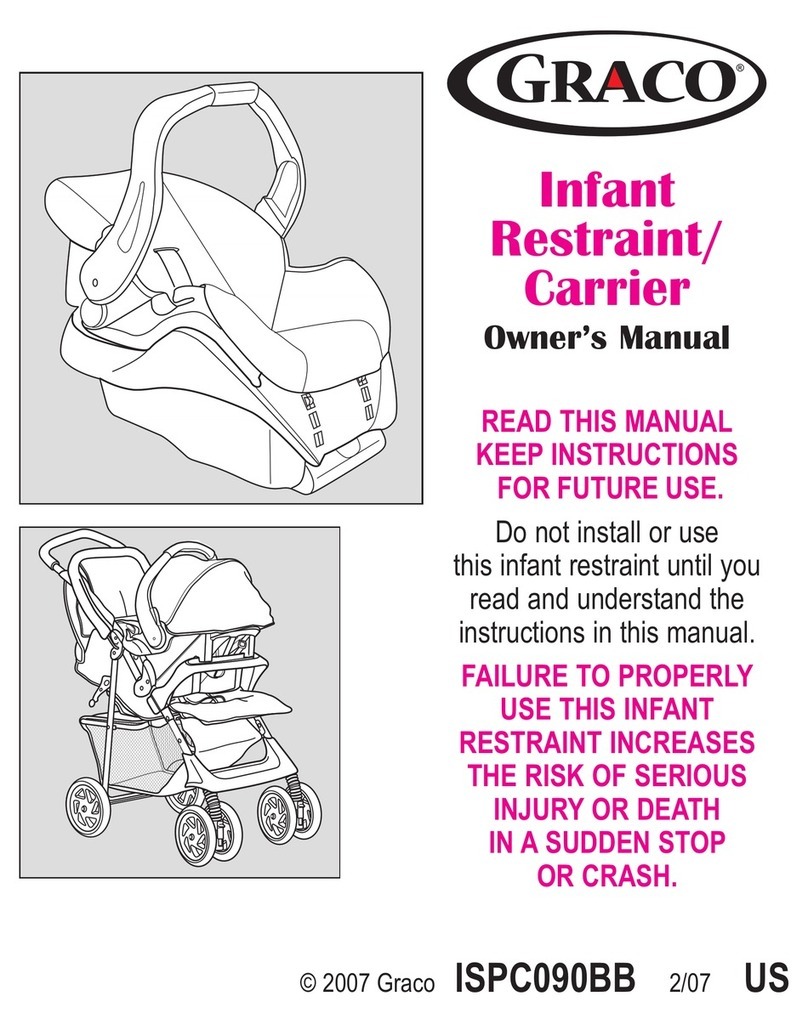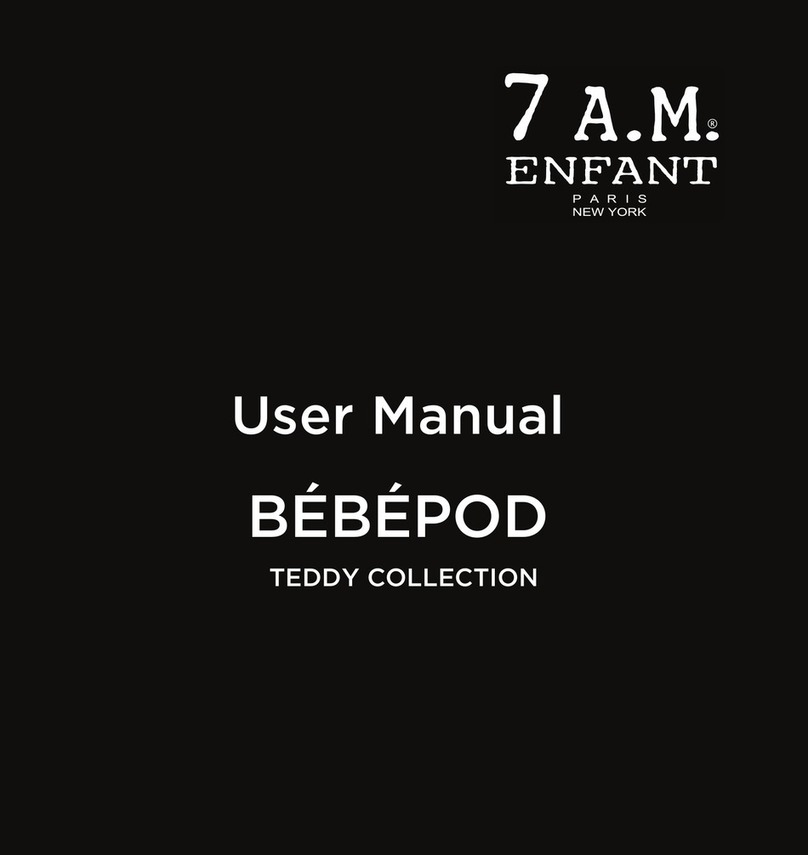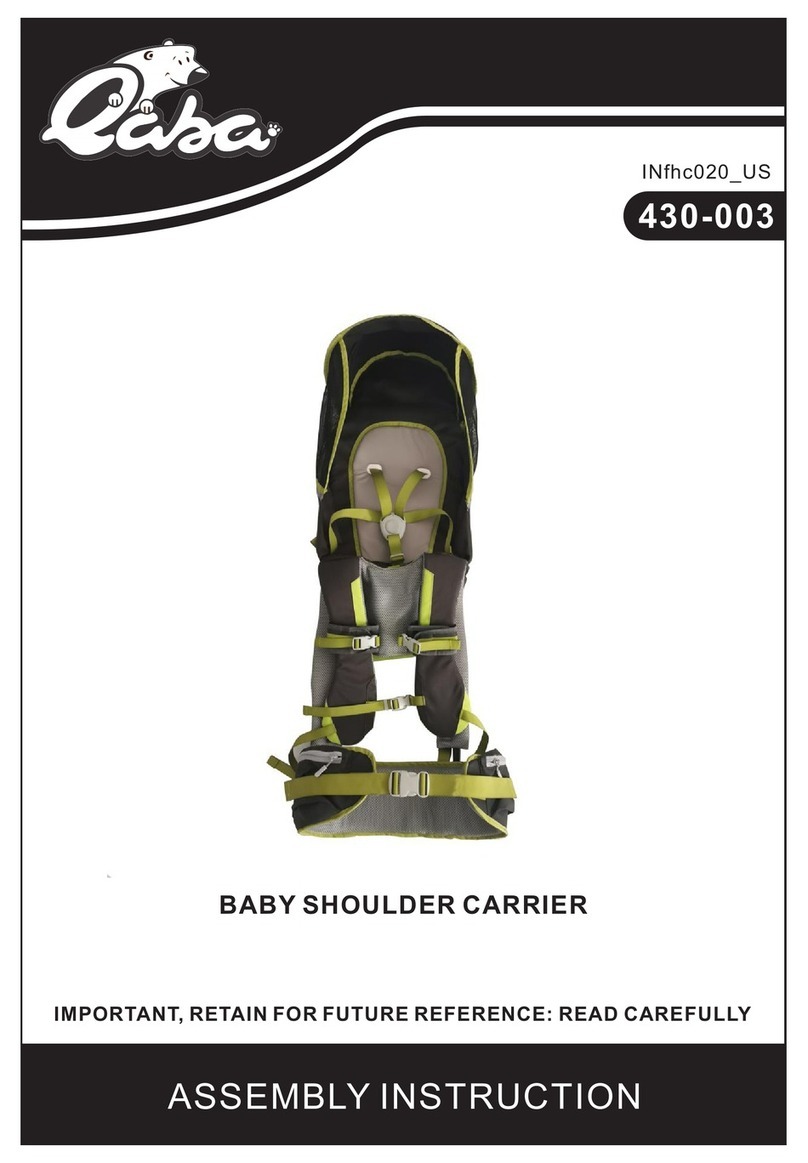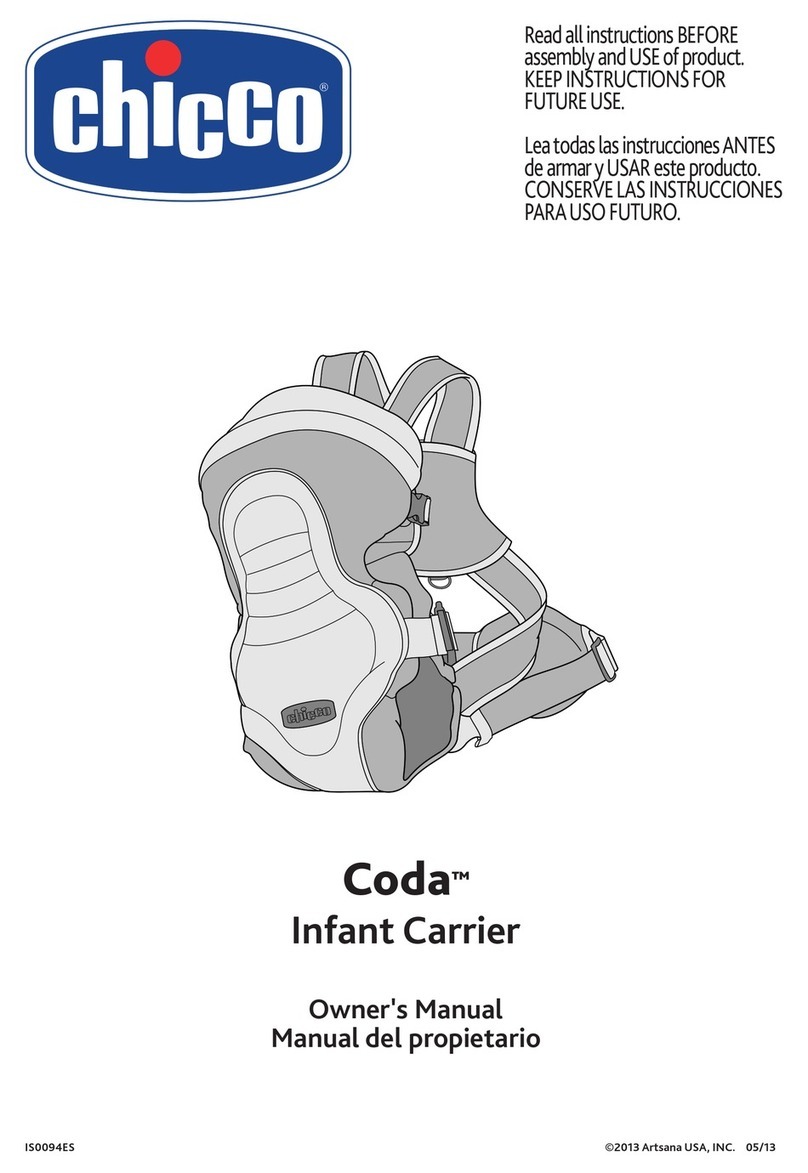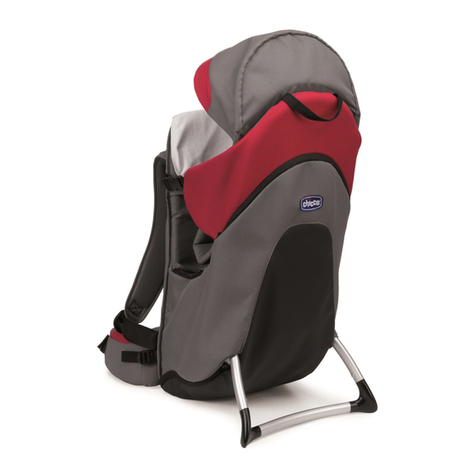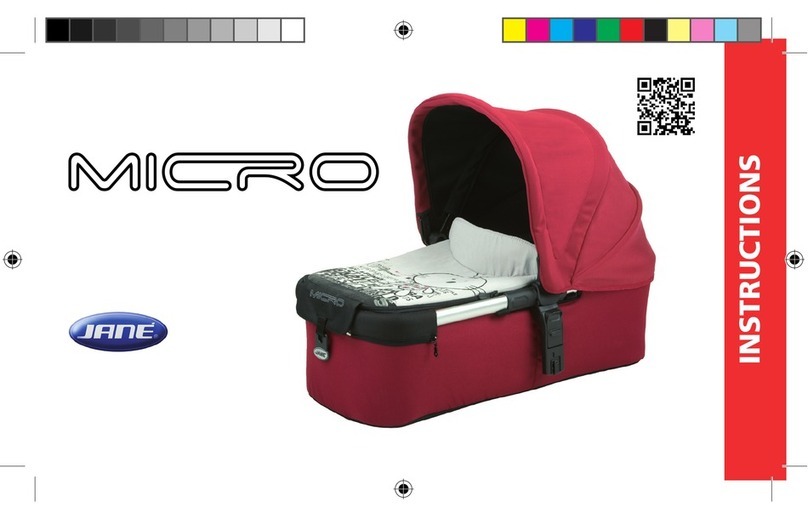10.
IMPORTANT: Always make sure baby’s face, nose, and mouth
are not obstructed.
Check your baby’s position regularly. Your baby should be
centered in the carrier with arms and legs extended and not
constricted by the carrier.
Baby’s head should be upright. If baby falls asleep or starts to
fuss in the facing-out position you should switch to the facing-in
position or remove them from the carrier entirely.
When baby is facing-outward, the Body Side Panels should
be in a narrow position. They should be gathered toward the
center of the carrier so baby’s legs can extend downward in a
comfortable position.
PLEASE NOTE : The arms of smaller babies should be
positioned out of the sides of the carrier, above the Torso
Band and below the Shoulder Buckles. Larger babies’ arms
can be positioned over the folded-down head support.
5. BringtheCarrierBodyupoveryourbaby’sbody.
TheHeadSupportshouldbeunbuttonedand
securedinthefolded-downposition.
Makesureonearmissecurelysupportingbaby
throughoutthebucklingprocess.Babyisnotsecure
untilallthebucklesandstrapsareproperlyfastened
andadjusted.
Stillsupportingbabywithyourleftarm,fastenthe
ShoulderBuckleonyourrightshoulder.
Switchyoursupportofbabytoyourrightarm,and
fastentheShoulderBuckleonyourleftshoulder.
6. Whilestillsupportingbaby,pulltheTorsoBand
Strapbehindyoutotightenthebandandpullbaby
closeintoyourbody.MakesuretheTorsoBand
issnug,butnottootight.Baby’slegsshouldnot
beconstricted.
*ThebabyshouldNEVERbeleaningforwardin
thecarrier.
7. Whenthebabyisproperlypositioned,youshouldbe
abletotiltyourheadforwardandkissthetopofyour
baby’shead.
Toadjustthebabyhigheronyourchest,liftthebaby
slightlyandpulltheShoulderStrapEndtighter,rst
ononeside,thenontheother.
9.
Carrier Use for an Older Baby: Facing-Out Position
2This position is for babies with head control.
* IMPORTANT! To avoid possible injury to baby’s neck or back, your baby MUST have
sufcient head control before you place baby in the Facing-Out position. Baby should
be able to hold his or her head upright without assistance.
* Your baby should always be comfortable. If your baby is fussy it could be an indication
that he or she is not properly positioned. If this occurs, take your baby out immediately
and adjust.
* We recommend having another adult assist you if this is your rst time using this type
of carrier.
* Support baby securely throughout the process of putting baby in the carrier, until all the
buckles and straps are properly fastened and adjusted.
* When using this carrier in the facing-out position, you should t it to the user before
placing the baby in the carrier.
NOTE: If you prefer to start with your left arm supporting baby,
simply swap right for left, and vice versa, in these instructions.
1. Repeatsteps1-6of1CarrierUseforanInfant:
Facing-InPositionInstructions(SeePage5).
IMPORTANT! Make sure the Head Support Buttons are
unfastened, and the Head Support is hanging down.
2. OpentheHeadSupportButtonsonbothsides,and
folddowntheHeadSupportinfrontofyou.Secure
theHeadSupportbyfasteningtheHeadSupport
SnapstotheCarrierBody.ThiswillkeeptheHead
Supportawayfrombaby’snoseandmouth.
3. Pickupyourbabyandplacehimorheronyour
chest,facingawayfromyou.
Holdingbabyinyourrightarm,useyourlefthand
toplacehisorherlegthroughtheLegOpeningon
yourleftside.
4. Switchyoursupportofbabytoyourleftarm.With
yourrighthand,placehisorherlegthroughtheLeg
Openingonyourrightside.
